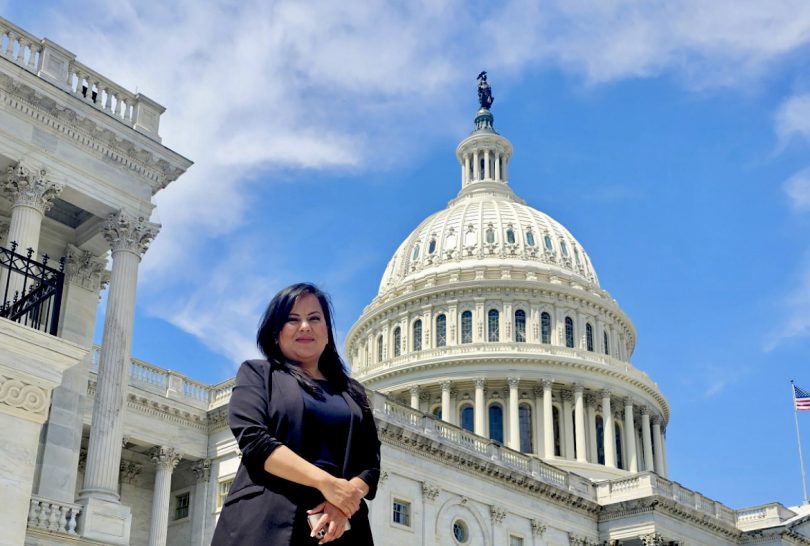By Lisbet Perez
As a victim advocate who is also a survivor of domestic violence, I have had the privilege of learning about and applying the principles of restorative justice in my own life.
My journey began 11 years after leaving my children’s father, a decision that shattered my sense of safety, trust and self-worth. I’m speaking out now, because I believe my story will resonate with many, especially fellow survivors working in domestic violence prevention.
It was a challenging journey, but I am grateful to have thrived. Years without financial support and lacking legal status were tough, but freedom from abuse and keeping my children safe were all that mattered.
Like many survivors, when I first learned about restorative justice, I was skeptical. But, the key principle that resonated with me was the focus on healing that can come from the process of repairing harm. That search for healing became especially relevant to me when my children’s father returned to our lives seeking to reconnect.
That’s when my son and I agreed to disclose the truth to his sisters — that their father’s absence resulted from his abusive behavior. Doing so was a difficult and scary situation, but ultimately it was also incredibly empowering. Fortunately, the restorative justice training tools I was able to learn helped me navigate the situation, prioritizing safety and restoration. This meant we reconnected with my children’s father in a way that fostered emotional safety, truth, forgiveness, and healing for all.
The process involved working with an incredible psychologist who helped me find the best possible way to have the difficult and needed conversation with my daughters, and give them the opportunity to decide whether they wanted to see their father or not.
Her guidance helped me to trust myself and my children’s strength, which transformed our lives in profound ways. My son, who remembered the abuse, was my biggest supporter throughout this chapter in our lives.
Creating a safe and supportive environment for my children to meet with their father was paramount. My goal was to minimize the trauma associated with this encounter. Given my children’s love for food and sweet treats, I chose a beautiful and familiar restaurant as the meeting spot.
The physical space provided a sense of security and comfort. To further ensure emotional wellbeing, I invited my youngest sister and her partner to join us. Their presence offered invaluable emotional support, which I consider equally important to physical safety.
This decision was a critical one. At the restaurant, my children’s father struggled to engage in healthy conversation, despite the additional presence of his mother and cousin, whom he had invited to accompany him to the meeting. Years of substance abuse had visibly taken a toll on his health, and his codependency on family members was evident. Yet, the meeting helped me realize that my children and I no longer require closure or repair from him. We’ve found healing and growth through our own resilience.
Rebuilding our sense of trust and also our sense of community was crucial to our healing as well. We connected with supportive friends and family and got involved in activities that brought us joy and fulfillment.
Perhaps most importantly, applying restorative justice practices to my family’s situation provided a sense of closure, as we were able to confront the harm that had been done and made the decision to let it go, which was essential for rebuilding our lives and moving forward.
Of course, restorative justice is not right for everyone, and it is not a replacement for the criminal justice system. Some survivors may not feel ready or able to confront the person who caused them harm. They also may not have access to the resources and support they need to navigate the process.
Additionally, restorative justice may not be appropriate in situations where the other person is not willing to take responsibility for their actions, or where a meeting is not safe, or where the harm is severe and/or ongoing.
Nevertheless, while it may not be right for everyone, I believe it’s crucial for a restorative path to remain accessible to domestic violence survivors who feel they might benefit from it, even if they decide to take that particular path many years after leaving an abusive relationship.
My experience with restorative justice has been deeply empowering and healing, both for me and for my children.
In my family’s case, the criminal justice system ensured our physical safety, while restorative justice facilitated our healing. As we continue to work towards creating a more just and compassionate society, I believe that restorative justice will play an increasingly important role.
****
Lisbet Pérez is a domestic violence survivor and advocate who uses her personal experience to push for change and to empower fellow survivors, immigrant women, and families.
The above photo of Lisbet Perez at the U.S. Capitol in Washington, D.C. by Alex Free.
This story was produced in partnership with the California Health Report. C

